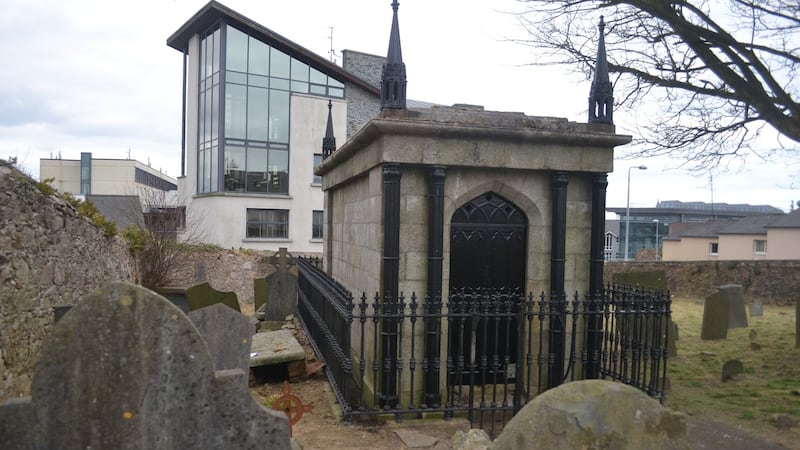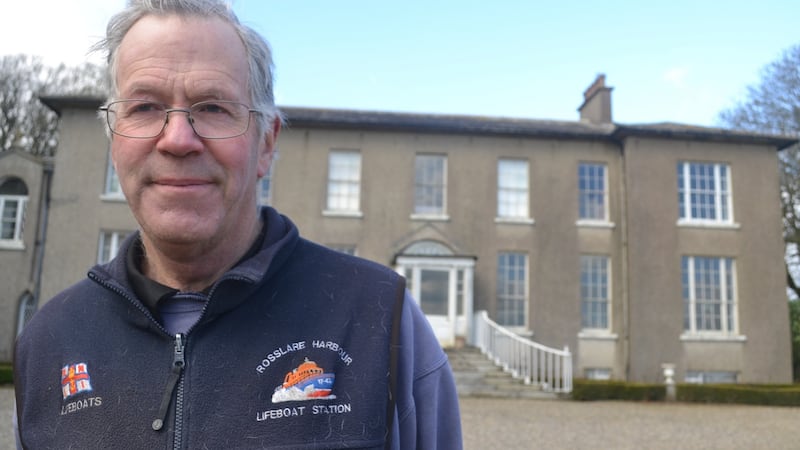The sudden death of Irish Parliamentary Party chairman John Redmond one hundred years ago on Tuesday presented a dilemma for his supporters.
The death of a national leader such as Redmond, even one who had fallen out of favour with many of his fellow countrymen and women, would normally be accompanied by a lying in state in a prominent location in Dublin such as the Mansion House or City Hall.
The year previously Redmond had been booed and jostled by a hostile crowd as he left the Irish Convention in Trinity College Dublin. The mood against his brand of moderate constitutionalism and support for the British war effort had turned ugly.
The people of Dublin never got to pay their respects or otherwise to Redmond. Fearing what his biographer Dennis Gwynn called "disgraceful demonstrations" Redmond's friends and family took his body from Kingstown Harbour and placed it on a special train bound for his native Wexford town. There they knew he would get a funeral in keeping with his status as the most prominent Irish politician of the first two decades of the 20th century.
The Irish electorate posthumously rejected Redmond’s legacy at the December 1918 general election, but the people of Wexford retained their affection for him and his family, turning out in their tens of thousands for his funeral in Wexford town. The bells of the Catholic and Protestant churches in the town tolled simultaneously. Every shop was closed. House blinds were drawn.
In 1924, huge crowds and 30 marching bands attended a commemoration event in the town and for many years his death was marked. The centenary of his birth in 1956 attracted seven government ministers and an address from Éamon de Valera who paid tribute to a "great Wexford man" while decrying his decision to ask Irishmen to go and fight in the first World War.
Closed graveyard
One hundred years after his death on Tuesday, March 6th, 1918, the people of Wexford will remember John Redmond.
The focal point of remembrance will be St John’s Cemetery, an ancient enclosed graveyard behind a whitewashed wall. Here, among the faded tombstones of long-dead denizens of the town, is the Georgian-era mausoleum which contains the remains of Redmond and many other members of his family.

For years, the cemetery, like its most famous inhabitant, was out of mind and out of sight. The mausoleum fell into a state of disrepair, its granite walls gathering a patina of grime from neglect, the railings around it rusted and the pinnacles on top of it falling off. The tomb was cleaned up for the centenary of the passing of the Home Rule Act in 2014.
St John's is open by request, but closed usually to the general public. There are plans to make it more accessible to the public and for an animated walking tour which will include sites associated with the Redmond family. Local author Billy Roche has written two pieces for the tour, one for the mausoleum and another for Redmond Park, named in honour of John Redmond's brother Major Willie Redmond, who was killed at the Battle of Messines Ridge.
The emphasis in the walking tour will be on the family story dating back to the middle of the 18th century. Many people assume the obelisk in Redmond Square in the centre of Wexford is to John Redmond. It is, instead, to his great uncle, also called John, who died in 1865. He owned large swathes of the town, developed the docks and brought the railways south as far as Rosslare. On the obelisk is written his last words: "My heart is in the town of Wexford, nothing can extinguish that love but the cold sod of the grave."
Family legacy
The Redmond legacy to Wexford town is an ongoing one. John Edward Redmond was one of the principal developers of the Sloblands, a 1,000 hectare stretch of low-lying polder reclaimed from the sea in the middle of the 19th century. There are plans to turn it into a greenway.
"Often you hear about Home Rule with this Bill and that Bill and it doesn't actually mean a lot to the individual," said Wexford county librarian Eileen Morrissey.
“So from the point of view of local people, this is about interpretation. You can’t ignore the Redmonds as part of the Wexford story. They are integral. If you are interested in the Redmond story and the history of the town, they have to be incorporated into it.”
Mayor of Wexford Borough District Cllr Jim Moore said the Redmond legacy in the town is regarded as a positive one. That point was driven home to him recently when a tour group from Galway asked to be shown the sites associated with John Redmond.

“We haven’t explored the value of his legacy to the point that we should have done,” he admits.
“It is amazing the number of people who come to Wexford and ask about Redmond. Only last August I hosted a visiting group from Ypres and their first World War museum. That sort of acknowledgment only gives you an idea of the impact that he made.”
Moore says many of the issues that Redmond grappled with are still current today. Redmond had to deal with the “hateful expedient” of partition. Contemporary Irish politicians have to deal with Brexit and the issue of the Border. “His political skills were rare for its time,” explained Moore, “and those political skills are also sought after in the political debates we are having now. History has a habit of taking peculiar turns.”
Ballytrent House
The Redmond family is associated with Ballytrent House where John and his brother Willie grew up, though the family never owned the home. (They rented it from a wealthier branch of the family.)
Ballytrent House near Rosslare is beautifully appointed with a wooden path to the beach which overlooks Tuskar Rock lighthouse.
The family dining room is dominated by a huge portrait of John Hyacinth Talbot who married Anna-Eliza Redmond in 1822.
She died in childhood and the mausoleum which Talbot built for her is the one in which John Redmond is interned.
The family home is owned by Jamie Ryan, a great-great grandson of Anna-Eliza. The house was bought by his grandfather William Ryan in 1921. The first entry in the visitor's book is December 7th, 1921, the date coincidentally of the signing of the Anglo-Irish Treaty.
The irony of that would not be lost on John Redmond who had spent decades trying to achieve a Home Rule settlement for Ireland by peaceful constitutional means. He never lived to see the creation of an independent Irish state.
Jamie Ryan says he is proud of his association with the Redmond family. John Redmond, he believes, is “underestimated and underappreciated”, but he paid a terrible price for telling Irishmen to go “wherever the firing line extends” in the first World War.
“He thought the war would be over very quickly. It would certainly have been a great feather in his cap if they had all come home quickly. The war ruined him really.”
Wexford historian and librarian Jarlath Glynn agrees. He references the words of Cardinal Francis Bourne at Redmond's funeral Mass in Westminster Cathedral. Redmond, the cardinal suggested, had "like his brother died a victim of the war although not on the field of battle".







